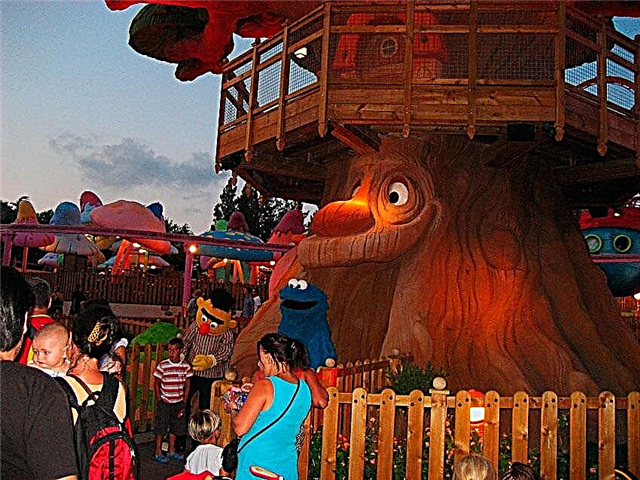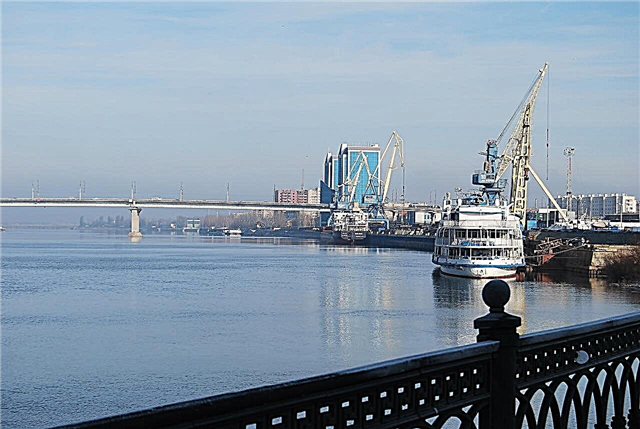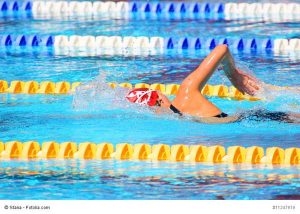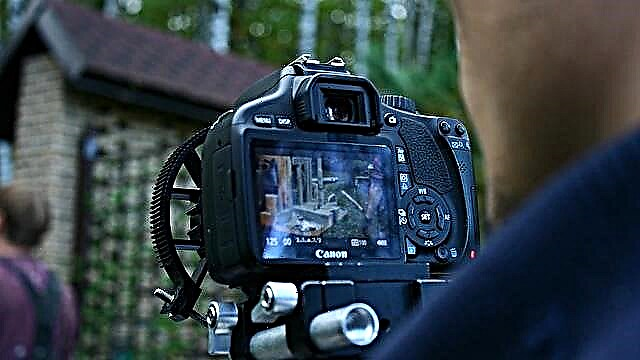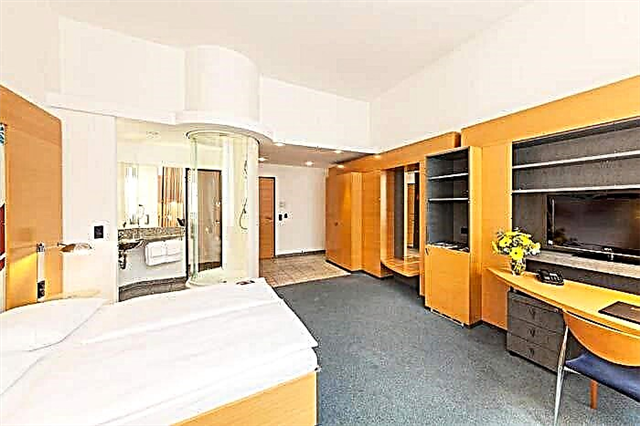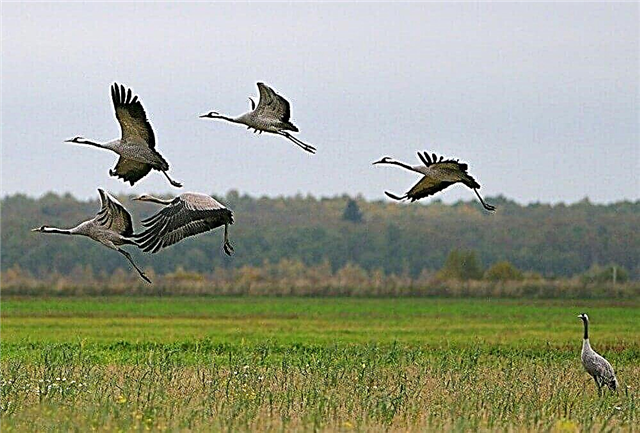The main feature of the Amur Region is the border with China. And a walk along the local embankment will give a lot of impressions: the Chinese Heihe is already looking at vacationers from the other side. Another important part of the region is BAM. The construction of the highway has changed these places. Therefore, the transport artery is still an important milestone in the history of the region.
Cupid gives the region many beautiful and memorable natural objects. Either its channel will bizarrely bend, forming the Cherpelsky krivuny, then multi-colored spots of limestone will appear on the high bank on the Kumar cliff. In addition, there are museums, theaters, temples and many other entertainment and educational places.
The most interesting and beautiful places in the region
List, photos with names and descriptions of attractions that are worth seeing!
Triumphal arch in Blagoveshchensk
The history of the building began in 1891. The original arch was built for the arrival of the crown prince. However, it was dismantled during the Soviet period. By 2005, a new twenty-meter arch was built in the pseudo-Russian style. A capsule is laid in the foundation - a message to descendants. It stands on Victory Square, this place used to be associated with trade. There are many attractions nearby: monuments of the Great Patriotic War, architectural objects, etc.

Baikal-Amur Mainline
Opened in 1938 and has a length of 3819 km. At the same time, some sections were put into operation on an ongoing basis only in the 21st century. It is one of the longest in the world. The BAM's capacity has been reached, work is underway to modernize the highway and increase the volume of traffic. Along with the construction, the regions around the railway were also developed.

Cosmodrome "Vostochny"
Built as a replacement for the rented Baikonur from Kazakhstan. Located near the town of Tsiolkovsky. The first successful launch took place in 2016. Two years later, a tourist attraction program was launched. It is planned to bring the groups to the observation decks during the launch of the missiles. In addition, you can get acquainted with the unclassified objects of the territory and buy themed souvenirs.

Norsky reserve
It covers an area of more than 211 thousand hectares, with almost 10 thousand hectares being a specially protected area. Founded in 1998. Geographically, the reserve is sandwiched between the rivers Nora and Selemdzha. The greatest value is the Siberian roe deer. This species belongs to migratory. There are more of them here than anywhere else - up to 7 thousand heads. Sometimes Amur tigers appear, but these are temporary phenomena (not their habitat).

Khingansky reserve
Located in the southeast of the region. The area is over 97 thousand hectares. It has existed since 1963. Divided into three sections, human economic activity is limited. The terrain is mostly flat, there are picturesque lakes. It differs from other reserves in the most favorable conditions for nesting of Japanese and Daurian cranes. There are other rare animals, including those listed in the Red Book.

Kundur dinosaur deposit
Researched in the middle of the 20th century. An almost complete skeleton of a herbivorous dinosaur with a very long neck was discovered. Its head is 110 cm in diameter, the length from the tip of the tail to the head is 10 m, and the height is 4.5 m. dinosaurs could migrate.

Ostrog Albazin
It appeared in the 17th century, thanks to the military and the Cossacks. The population grew in number rather quickly, and fugitive peasants, industrialists and merchants came here. In the 70s of the last century, excavations and active study of the area began. Were found: a dugout, the remains of more than fifty people, pectoral crosses and so on. In the village of Albazino, there is a museum with artifacts from the prison.

Bureyskaya HPP
One of the largest in Russia. Built on the river of the same name. Commissioned in the mid-2000s. Excursion routes at hydroelectric power plants usually include acquaintance with the history of construction and inspection of the structure itself, both from the observation deck as a whole, and from some work premises. The tour also captures other nearby attractions, for example, the source of St. Elijah.

Amur Regional Museum of Local Lore
Founded in Blagoveshchensk after the exhibition of gold miners and the arrival of the Tsarevich in 1891. Occupies a building that housed a department store at the beginning of the 20th century. The funds contain more than 155 thousand items of exhibits. Excursion programs are divided by topic and age group. The museum has an impressive library, a lecture hall hosts symposia, a cinema hall and a souvenir stall.

Burning mountains
Location - Shimanovskiy district, Amur bank. The nearby settlement is the village of Anosovo. The peculiarity of the phenomenon is explained by the coal deposits, which are constantly smoldering or burning underground. The phenomenon has been going on for over 300 years. Because of this, thick smoke is often seen bursting out or open flames. The mountains stretch for several kilometers.

Amur embankment in Blagoveshchensk
Although the embankment looks well-groomed and modern, the local authorities want to make it even more comfortable. In 2019, it is planned to start large works on the reconstruction of this territory. The peculiarity of this place is the view of the other side of the Amur River. China is already there, namely the city of Heihe. Visitors do not immediately understand why there is such a contrast between the banks; nevertheless, the buildings and style of the settlements are different.

Monument to the border guard with a dog in Blagoveshchensk
Opened in 2007 and turned towards the opposite bank. A three-meter bronze guard with a faithful four-legged companion guards the border between Russia and China. For good luck, tourists and locals rub the dog's nose. There are other monuments nearby. For example, a monument to the dog Druzhk, who showed himself during a flood, or a river gunboat, which served its purpose during the Second World War.

River artillery boat from the Second World War
Installation took place in 1989, and the grand opening in 1990. This is a real warship that participated in the liberation of the countries of Eastern Europe from the Nazis. In 1967 he received a new appointment and settled on the Amur. Here the border service was carried out by boat. After decommissioning, it was restored to its proper form and became a historical monument. There is a memorial plaque.

Cherpel krivuny
The bizarre bends of the Amur river got their name, as they formed landscapes of incredible beauty. This area is out of the ordinary; the river floodplain cuts deep into rock formations. Depending on the point from which you look, you can take part of the territory for a peninsula. At the same time, China will be on one side of the river, and Russia will be on the other.

Mikhailovskie pillars
Named after the nearby village - Mikhailovka. A cascade of cliffs of different heights merges with the forest in the summer. The pillars are monolithic, although it is conditionally possible to distinguish 16 parts of one composition. The lowest section is about 15 m, the highest is about 75 m. They were formed due to the destruction from erosion of the stone edge of the terrace. Even now, this natural monument is not as stable as the researchers would like.

Kumar cliff
Belongs to the left bank of the Amur. The height is about 25 m. Its peculiarity is the outcropping of limestones with various impurities. From this, the cliff becomes spotty, white, greenish, reddish and other fragments appear against the usual gray background. They are especially noticeable from a distance in the general plan and in contrast to the surrounding nature. Nearby is the Karbat tract.

Monument to the Cossacks-pioneers
The installation took place in a festive atmosphere in Blagoveshchensk in 2014.The place was not chosen by chance: here in 1856 26 Cossacks were buried, who founded the Ust-Zeya post. The sculptural group consists of three figures, facing towards the border. They stand on a dais to control what is happening around the perimeter. In addition, it is easier for tourists and residents to find a monument.

Gabriel-Archangel Monastery
Construction was carried out from 1896 to 1903. The style of architecture is neo-Gothic. Initially it belonged to the Roman Catholic Church, but in the middle of the last century it was transferred to the Orthodox. It was the only temple in the city, transformed into a man's monastery, although there is little area nearby for building up for the needs of the monastery. All comers are allowed to attend services in the main church.

Amur Regional Drama Theater
The first performance took place in 1883, staged by Gogol's "The Inspector General". The current building was built three years later with sponsorship money and donations from theatergoers. The building is classic for institutions of this kind: light finishes, a facade with impressive columns, and so on. The troupe regularly goes on tour to other cities of the country, and also hosts colleagues from all over Russia.

BAM History Museum in Tynda
Opened in 1976 and dedicated to everything that is directly or indirectly related to the BAM. In the exposition there was a place for local nature, the peoples who inhabited this territory earlier, the medical equipment of the first builders, urban history and much more. There are both permanent and temporary exhibitions. Among the exhibits: personal belongings of builders, paraphernalia, documents, rare photos and more.

Zeya reserve
Founded in 1963. It is located in the eastern part of the Tukuringra mountain range, hence the corresponding features of the relief. Occupies an area of almost 100 thousand hectares. The flora and fauna are quite diverse. This is partly due to the local reservoir, which was filled in 1980: there were more fish, the balance in the food chain changed, and the number of animals increased.

Tent camp "Golden Sands"
Broken on the shore of the Zeya Sea Wild rest is combined with some attributes of comfort. Accommodation is exclusively in tents, the beach is sandy. However, there are places for charging gadgets, showers, dry closets. There is a field kitchen, professional chefs are responsible for lunches and dinners. Among the entertainment: water attractions, boat rental and other water transport, fishing.

Ethnographic complex "Evenk village"
It is located in the Tyndinsky region among the hills. On the territory there are houses for tourists for 2 and 6 people, there are two-storey and one-storey ones. They have everything you need and modern for relaxation. But the environment looks authentic: the semblance of yurts, wooden outbuildings, life-size figures and much more. The tour includes historical background and rules of conduct in the village.

Lake lotus in Ivanovka
An artificial reservoir, which appeared for the sake of a scientific experiment and became an attraction, not only for the village, but for the entire region. The idea of growing lotuses was planted by a local school teacher. This is not the easiest occupation, it is not for nothing that the plant is listed among the rare. The project has been implemented for five years, and now tourists regularly come to Ivanovka to admire the lake.

Cathedral of the Annunciation
Built in the middle of the 19th century. The city got its name in honor of this temple. In 1926 it was destroyed by fire. In 1997, construction began on a new cathedral. At the place of its laying, the burials of priests were discovered, the remains of which were transferred to another place according to all the rules. Services have been running since 2003. The main relic is the Albazin Icon of the Mother of God.

Monument to the shuttle in Blagoveshchensk
Installed in 2008 near the premises where the Amur Fair was held. Material - bronze, weight - about 2 tons. It depicts a monument to a typical small businessman of the 90s: a thin man in glasses with a purse on his belt drags two huge trunks, one on his shoulder, the other over a canopy in his right hand. The image turned out to be collective, but very accurate, because in those days everyone went into commerce, including intellectuals.

City Park of Culture and Leisure
The main place of leisure for Blagoveshchensk residents and guests of the city. The park appeared in 1889, but it was strikingly different from what it is today. Now there are attractions for children, all kinds of weekend entertainment programs. Big holidays are held to coincide with important events and dates. There are cafes and street vendors for sweets. You can sit on a bench in the shade or walk along the cobbled paths.

Monument to "Polite People" in Belogorsk
Installed in 2015 at the initiative of the local mayor. The monument depicts a full-length soldier holding a kitten in his hands. The term "polite people" came into circulation in relation to the military in 2014 after the events in Crimea. The monument, as conceived by the authors, should emphasize the good intentions of the soldier and his desire to help others and take up arms only as a last resort.

Far Eastern Aerospace Museum
Located near the village of Ivanovka. The exposition is an open-air area where decommissioned combat vehicles are collected. There are military and more modern designs. They are restored and refurbished here. During the excursion, you can learn the history of each aircraft, examine them carefully and even try on flight paraphernalia. Tourists are also offered a bird's eye view of the surroundings.

Amur scribble
Ancient inscriptions on stones have been studied in detail since the middle of the last century. Some of them are dated 1128. There are several sections with hieroglyphs and drawings. For example, Arkharinsky writings are located not far from the path along which peoples migrated in the past. There is another complex near the Kalinovka River. There are many depictions of animals and anthropomorphic figures. There is a rock with petroglyphs and a village called Erofei Pavlovich.



